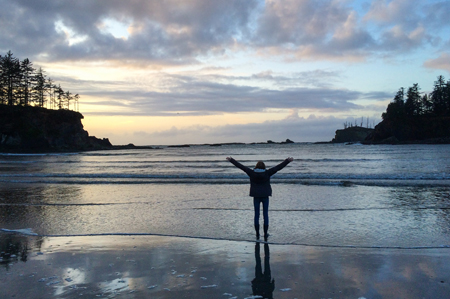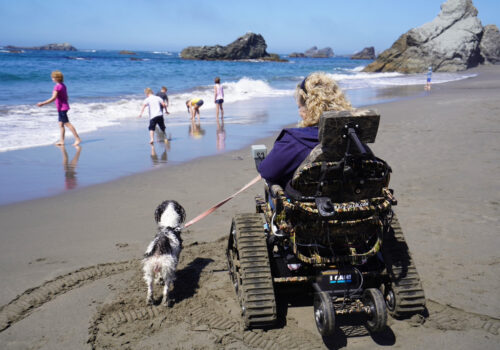
The winter-spring shoulder season is a stunning time at the Oregon Coast. Fewer people are out and about, leaving the 363 miles of often sunny and sparkling beaches — as well as trails, parks and rivers — clear for all sorts of exploration.
Much of it, in fact, is managed by Oregon State Parks, which offers a bounty of natural, cultural and educational resources for families all year long. Dane Osis, a park ranger at Fort Stevens State Park, says it’s often the most under-appreciated time of year. “There’s usually a week in February when we get a week in the 60s, early sunshine,” he says. “You can get a campsite without reservations. (Unless it’s a cabin or yurt.) You can be more spontaneous. Get out and go.”
Here are a few of our best bets for free (or cheap) outdoor fun on the Coast with Oregon State Parks in its gilded off-season.
On the North Coast
Go on a bird hike at Fort Stevens State Park, where the habitat is a magnet for ducks and geese this time of year. If you’ll lucky, you’ll catch a sighting of a rare bird like a bald eagle or snowy owl. About 10 years ago, a bunch of snowy owls spent the winter at the park and attracted birders from all over the country. Bird walks at Fort Stevens happen rain or shine, and may include bird counting for the park’s monitoring efforts. They take place on the trails around Battery Russell as well as nearby Sunset Beach State Recreation Site, part of the Fort to Sea Trail. Kids age 6-12 can earn prizes by getting stamps at Fort Stevens and other state park sites all year long on the coast — an easy way to nurture their love of nature, animals and natural resources. Unlike late spring and summer when the trails, beaches and campgrounds at Fort Stevens, Cape Lookout and Nehalem Bay are overused, the off-season is a great time to experience them.
On the Central Coast
Go hunting for agates — as well as fossils, petrified wood and other treasures — at spots like Yachats, Depoe Bay and Beverly Beach and Moolack Beach in Newport, among others. Late winter/early spring is the perfect time, after storms have removed some sand from the beaches and left exposed gravel beds with all sorts of natural debris. From pink to orange to blue and gray, agates are a blast to collect and toss in a rock tumbler until shiny. If you are lucky, you just may find a hidden glass float, part of Lincoln City’s Finders Keepers program, which runs through May. When you’re cruising along the coastline, be mindful to never turn your back on the ocean, stay alert and mindful of the tides, and avoid walking on jetties.
On the South Coast
Some of the most beautiful campgrounds on the state are on the rugged South Coast, open year-round. But three of them in particular are ripe for off-season adventuring. Sunset Bay State Park, just south of Cape Arago Lighthouse, offers outstanding opportunities for tidepooling, both at the bay and the beach south of Cape Arago. Some of the best ocean vistas are here, and Simpson Reef is a prime location to spot seals and sea lions. (Be aware of local tidepool etiquette and beach safety here and elsewhere along the Oregon Coast.) Situated at the base of Humbug Mountain, Humbug Mountain State Park is another favorite, where the agate hunting and trail hiking is superb. The day use area at Arizona Beach State Park is a fantastic spot for beachcombing during the winter. And Alfred Loeb State Park, just 10 miles up the Chetco River in Brookings, is a perfect place to kick back and enjoy some solitude on the Riverview Trail, hiking into lush, old-growth flora and fauna on the mile-long U.S. Forest Service Redwood loop.
Story by Jen Anderson
Photo by Robbie McClaran



